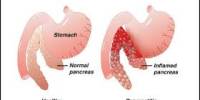UCLA researchers have taken the first step in determining what would be an effective technique to detect gestational diabetes mellitus (GDM) earlier in pregnancy, potentially improving diagnosis and treatment for the most prevalent pregnancy condition.
The study is published in the peer-reviewed journal PLOS ONE.
Gestational diabetes is a type of elevated blood sugar (glucose) that develops during pregnancy and normally goes away once the baby is born. It can occur at any time throughout pregnancy, although it is more frequent in the second and third trimesters.
Blood sugar levels rise as a result of gestational diabetes, posing dangers to both the baby and the mother. It can cause high blood pressure, an increased risk of diabetes in the future, and a higher risk of c-section in the mother, as well as excessive birth weight, early delivery, and other problems in the infant.
In the late second and third trimesters, traditional screening and lab tests are used to diagnose the problem. One element to lessening the impact of the illness is the capacity to predict it early.
“As pregnancy complications continue to rise worldwide, there have been increasing efforts to study with urgency the first-trimester as a window of opportunity for early identification and prediction of GDM, and the optimal point to take action to prevent maternal disease,” said Dr. Sherin Devaskar, lead author of the study and physician-in-chief of UCLA Mattel Children’s Hospital and distinguished professor of pediatrics at the David Geffen School of Medicine at UCLA.
Identifying GDM biomarkers early in pregnancy could lead to better monitoring and the development of safe and timely interventions and treatments that would minimize disease severity, therefore benefiting the mother’s and offspring’s long-term health.
Extracellular vesicles (EVs), circulating “communicators” that carry and deliver microRNA genes (miRNAs) inside maternal blood, were the focus of the current investigation. They are secreted by the placenta and play an important role in pregnancy and pregnancy problems, such as GDM.
Researchers took blood samples from 24 pregnant women during each trimester and at delivery to look at miRNA expression in EVs. They discovered that women with GDM had different expression of miRNA in EVs isolated from blood samples taken in the first trimester compared to women who had normal healthy pregnancies.
The investigators noticed changes in these miRNAs before clinical diagnosis, implying that they were involved in the disease’s development rather than being influenced by variables other than the disease or treatments like insulin, which might affect the miRNA content of circulating EVs.
Researchers also discovered upregulation of certain miRNA in first-trimester pregnancies that went on to be diagnosed with GDM, implying that the miRNA cargo in circulating EVs may be communicating with other maternal organs and cell types, as well as interacting with signaling pathways involved in metabolism and inflammation, potentially influencing the maternal metabolic adaptations seen in women who develop GDM.
“This is a promising initial step in finding a robust and accurate biomarker panel that performs much better than one single feature in predicting GDM during early pregnancy,” said Dr. Devaskar.
“This study provides more evidence that GDM is a condition that begins developing far earlier than when currently clinically diagnosed, after the midpoint of pregnancy when sadly, complications may already be irreversible. As providers of care for high risk pregnant patients and their babies, we are excited about this step towards the potential of more reliable and earlier diagnosis so that we may intervene before the development of adverse conditions for mother and baby that are often lifelong.”
The authors state that more research is needed to understand the mechanistic role of circulating EVs during pregnancy, their role in pregnancy complications, and the use of EV-associated miRNAs as noninvasive disease predictors in pregnancy, but that EV-associated miRNAs from the first trimester of pregnancy have the potential to act as an early gestation predictor of the subsequent development of GDM, before the emergence of characteristic clinical or biochemical feats.
Other authors on the study included Shanthie Thamotharan, staff research associate, Shubhamoy Ghosh, PhD, assistant project scientist, and Laura James-Allan, PhD, post-doctoral fellow, all three in the department of Pediatrics-Neonatology at UCLA; Margarida Y.Y. Lei, staff research associate and Dr. Carla Janzen, associate professor, in the department of obstetrics and gynecology, division of maternal-fetal medicine at UCLA.
Research was supported by the National Institutes of Health under grant numbers NU01HD087221 (to SUD, CJ, KS), R01HD089714 (to SUD), and R01HD100015 (to SUD).
















